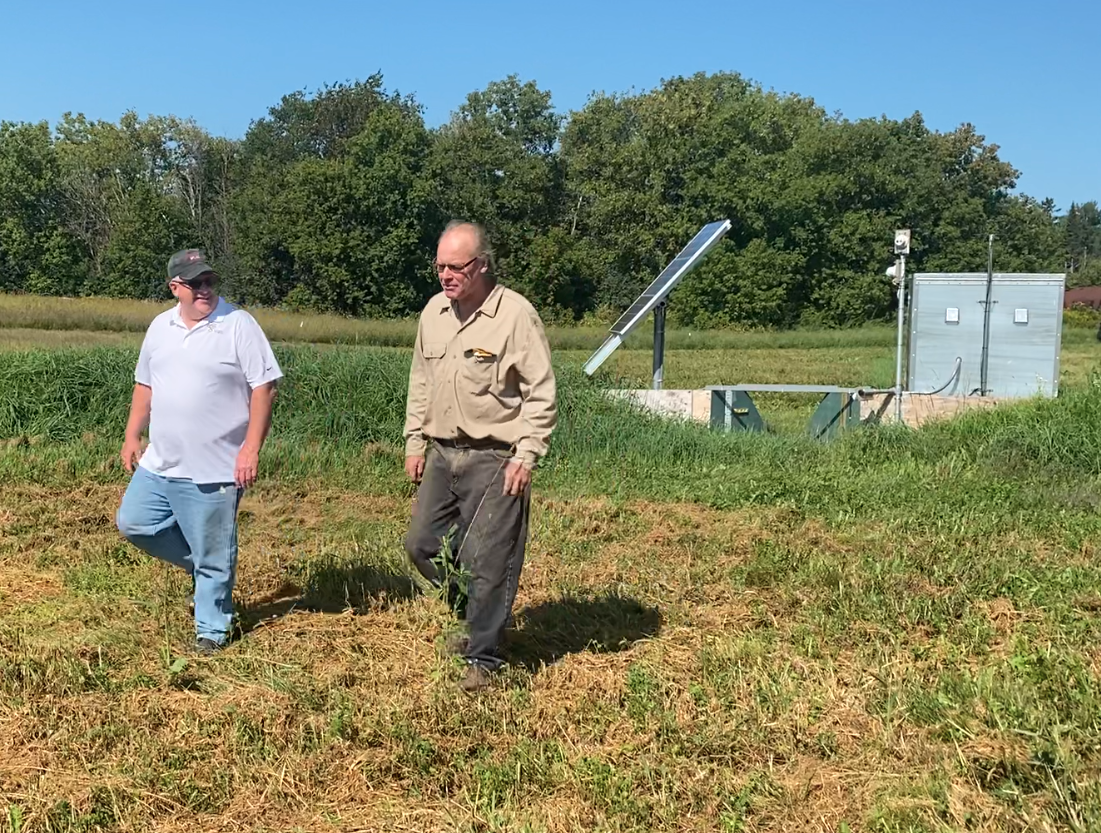With the 20-year anniversary of UW Discovery Farm’s establishment this year, we have collected approximately 150 site years of edge-of-field, surface water quality data in Wisconsin. With this extensive database of different farming systems and diverse physical settings, we are increasingly able to predict the likely runoff impacts from a given piece of agricultural land in many regions of Wisconsin.
In the fall of 2018, we began an edge-of-field monitoring project in the Antigo Flats region. This unique area is comprised of a relatively flat, triangular outwash plain bordered by terminal moraines on the northeast and southeast and a ground moraine on the west. The change in the topography of these bordering glacial deposits can often result in the development of a microclimate in the region with increased cloud formation and precipitation patterns.
The crop production in the Antigo Flats is well suited for seed potatoes, a high-value crop. In many seed potato cropping rotations in the area, the focus of the crop rotation is to maintain fertility and pH values optimum for seed potato production. In the monitored basins, the soil test phosphorus values ranged in the mid to high 200 values and pH values were in the high 5 to low 6 values. The Antigo Flats Producer Group helped to fund this monitoring project to evaluate the impact of potato and other crop production on the low pH, high soil test phosphorus soils in the area.
Photo: Farmer and partner checking out a water quality monitoring station in Antigo
With high soil test phosphorus values and extensive runoff from the deep snowpack during the first year of monitoring, I expected to see correspondingly high phosphorus losses. Although the amount of runoff was 3-5 times higher than the Discovery Farms median, phosphorus losses did not follow like I would have predicted. The second year of data collection confirmed similar trends. Even with large rain events during the summer that caused runoff, phosphorus values were lower than expected.
To gain a better understanding of the factors involved in this, I consulted area farmers and crop consultants. Right now we are investigating the role that pH is playing to reduce the solubility of phosphorus and keeping the loss of dissolved phosphorus lower than expected from these soils.
In the coming year, we plan to perform some additional soil testing and analysis to evaluate the properties of these soils to better understand the phosphorus loss dynamics. Water quality monitoring often brings to light the intricacies and dynamics of water, soil, and our agricultural systems. Increasing the understanding of these different factors at play is truly the reason that we continue to monitor water quality in a variety of settings, and we are learning right along with you. It’s why we monitor.
- Why we monitor: Early observations in the Antigo Flats - June 19, 2021
- Install tile correctly the first time - March 18, 2020
- What’s in that silver box? - July 25, 2019
